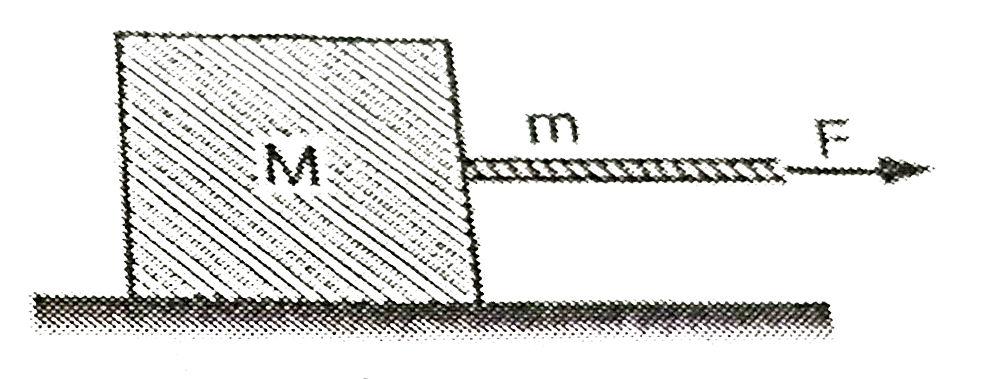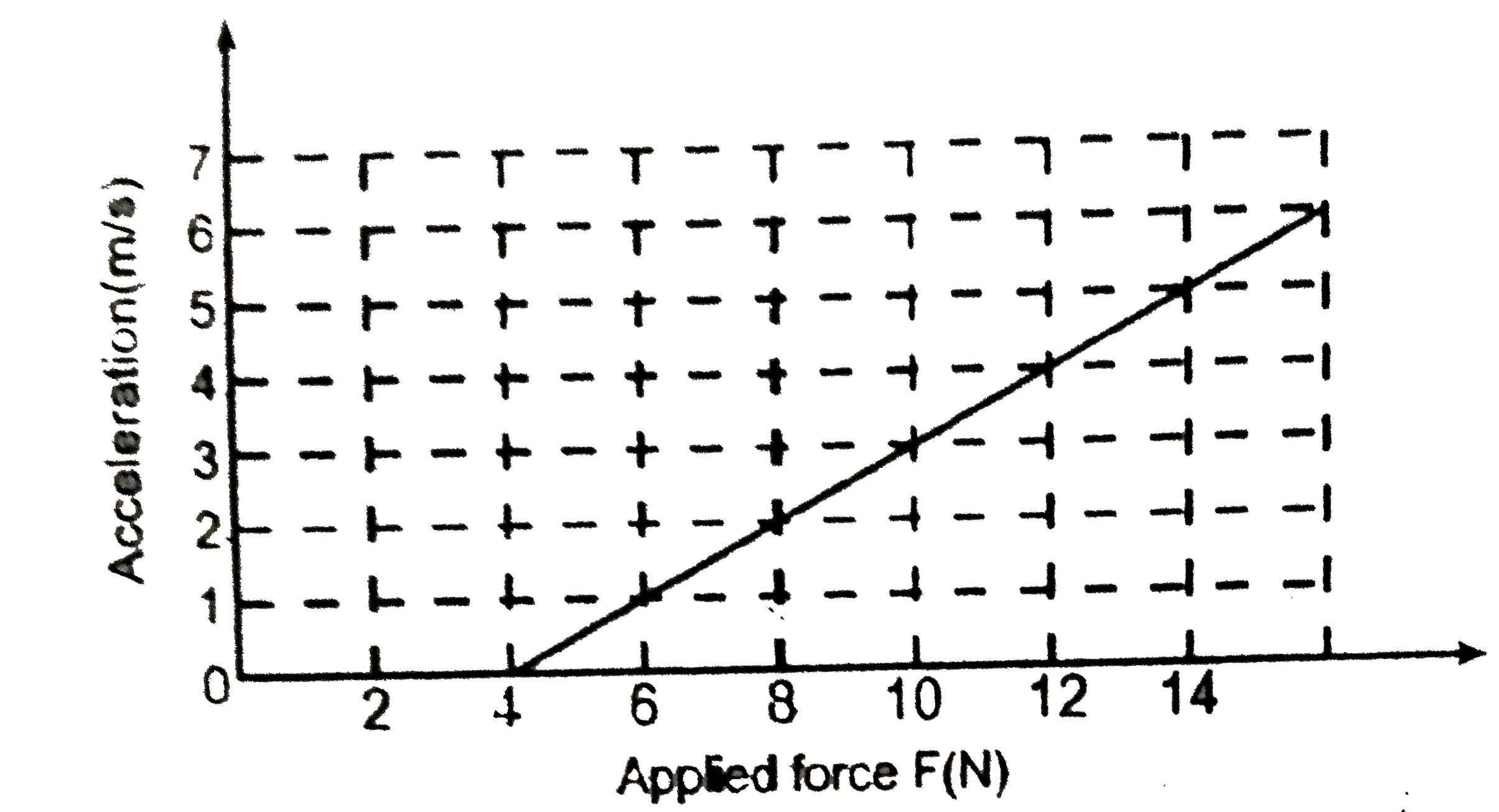A block of mass M is pulled along a horizontal frictionless surface by a rope of mass m. If a force P is applied at the free end of the rope, the force exerted by the rope on the block is
(a)PMM+m
(b)PmM+n
(c)PMM−n
(d)p
The correct Answer is:A
To solve the problem of finding the force exerted by the rope on the block, we can follow these steps:
1. Identify the System:
We have a block of mass M and a rope of mass m on a frictionless surface. A force P is applied at the free end of the rope.
2. Determine the Total Mass:
The total mass of the system (block + rope) is M+m.
3. Calculate the Acceleration of the System:
Since the entire system is being pulled by the force P, we can use Newton's second law to find the acceleration A of the system:
A=PM+m
4. Analyze the Forces on the Block:
The block experiences a force from the rope. Let’s denote this force as F. According to Newton's second law, the force exerted by the rope on the block can be expressed as:
F=M⋅A
5. Substitute the Acceleration:
Now, substitute the expression for acceleration A into the equation for F:
F=M⋅(PM+m)
6. Final Expression for the Force:
Simplifying this gives:
F=M⋅PM+m
Thus, the force exerted by the rope on the block is:
F=M⋅PM+m
We have a block of mass M and a rope of mass m on a frictionless surface. A force P is applied at the free end of the rope.
The total mass of the system (block + rope) is M+m.
Since the entire system is being pulled by the force P, we can use Newton's second law to find the acceleration A of the system:
A=PM+m
The block experiences a force from the rope. Let’s denote this force as F. According to Newton's second law, the force exerted by the rope on the block can be expressed as:
F=M⋅A
Now, substitute the expression for acceleration A into the equation for F:
F=M⋅(PM+m)
Simplifying this gives:
F=M⋅PM+m
F=M⋅PM+m
Topper's Solved these Questions
- DYNAMICS OF A PARTICLEBook:VMC MODULES ENGLISHChapter:DYNAMICS OF A PARTICLEExercise:JEE Advance (Archive) Level - II (SINGLE OPTION CORRECT TYPE )
Explore 31 Videos
- DYNAMICS OF A PARTICLEBook:VMC MODULES ENGLISHChapter:DYNAMICS OF A PARTICLEExercise:LEVEL 2 ( NUMERICAL TYPE FOR JEE MAIN )
Explore 16 Videos
- DC CIRCUITBook:VMC MODULES ENGLISHChapter:DC CIRCUITExercise:JEE ADVANCED ARCHIVE
Explore 68 Videos
- ELECTROMAGNETIC INDUCTION & ALTERNATING CURRENTBook:VMC MODULES ENGLISHChapter:ELECTROMAGNETIC INDUCTION & ALTERNATING CURRENTExercise:IN-CHAPTER EXERCISE-G
Explore 10 Videos
Similar Questions
A block of mass M is pulled along a horizontal frictionless surface by a rope of mass m . Force F is applied at one end of rope. The force which the rope exerts on the block is:
View SolutionA block of mass M is pulled along a horizontal frictionless surface by a rope of mass m as shown in A horizontal force F is applied to one end of the rope. Find
(a) the acceleration of the rope and block
(b) the force that the rope exerts on the block
(c) the tension in the rope at its mid point

View Solution
Knowledge Check
A block of mass M is pulled along horizontal firctionless surface by a rop of mass m. Force P is applied at one end of rope. The force which the rope exerts on the block is
APM−mBPM(m+M)CPM(m+M)DPMM−m
A block of mass 10 kg lying on a smooth horizontal surface is being pulled by means of-a rope of mass 2 kg. If a force of 36N is applied at the end of the rope, the tension at the mid point of the rope is,
View SolutionA block of mass M is pulled along a horizontal surface by applying a force at angle θ with the horizontal. The friction coefficient between the block and the surface is μ. If the block travels at a uniform velocity, find the work done by this applied force during a displacement d of the block.
View SolutionA block of mass M is pulled along a horizontal surface by applying a force at angle θ with the horizontal. The friction coefficient between the block and the surfasce is μ. If the block travels at a uniform velocity, find the work donen by this applied force during a displacement d of the blcok.
View SolutionA block of mass Mis pulled vertically upward through a rope of mass m by applying force F on one end of the rope. What force does the rope exert on the block?
View SolutionA rope of length L and mass M is being pulled on a rough horizontal floor by a contact horizontal force F=mg. The force is acting at one end of the rope in the same direction as the length of the rope. The coefficient of kinetic friction between rope and floor is 1/2. Then the tension at the midpoint of the rope is
View SolutionA block of mass m is moving on a rough horizontal surface. μ is the coefficient of kinetic friction between the block and the surface. What is the net force exerted by the surface on the block?
View SolutionA block of unknown mass is at rest on a rough, horizontal surface. A horizontal force F is applied to the block. The graph in the figure shows the acceleration of the block with respect to the applied force. The mass of the block is

View Solution